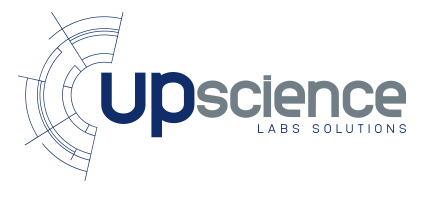Table of contents
- What are Genetically Modified Organisms (GMOs)?
- How are Genetically Modified Organisms regulated?
- Growing consumer awareness of Genetically Modified Organisms
- How Upscience can help you?
What are Genetically Modified Organisms (GMOs)?
Genetically Modified Organisms (GMOs) are organisms whose genetic material has been altered. Specifically, a GMO is defined by Directive 2001/18 / EC as “an organism, with the exception of human beings, whose genetic material has been modified in a way which does not occur naturally by multiplication and/or by natural recombination.” This modification is a result of genetic engineering techniques which allow the organism to achieve a new characteristic which would be impossible in nature. There are regulations for GMOs to ensure the safety of humans and animals that may consume them.
Genetically Modified Organisms have been widely developed and marketed as they facilitate crop protection as a result of higher resistance to diseases and viruses. Cultivated in 26 different countries, currently the most commonly grown GMO crops include corn, soya, sunflower, sugar beets, wheat, rice, tomato, rape, barley, flax, sesame, and cotton. While many people think of GMOs as those organisms containing one genetic modification, the truth is that plants can contain multiple modifications. The European Food Safety Authority (EFSA) is assessing the safety of these plants that contain several genetic modifications, which is called a stack. Stacks are intended to benefit from the combination of several properties created by individual genetic modifications within the same plant. For example, a stack could include resistance to insects and tolerance to herbicides simultaneously.
Single or multiple GMO modifications to crops can result in higher yields and therefore higher returns. This capability of better production has spurred the development of modifications over recent years. However, Genetically Modified Organisms have been one of the most hotly debated topics in agriculture, with the concerns over environmental and health risks being voiced by regulators and consumers alike. These concerns have resulted in strict regulations around GMOs in some countries.
How are Genetically Modified Organisms regulated?
National and international regulations for GMOs define the market rules, but vary greatly from one to the other. Some countries do not have any restrictions, while others have regulatory provisions for GM foods concerning health and environmental risks. On the international stage, the European Union (EU) has some of the strictest standards in the world when it comes to GMOs, including assessments required for the safety of plants subjected to genetic modifications. In the EU, Directive 2015/412 allows each member state to limit or prohibit the culture of GMOs in their country. Furthermore, manufacturers must demonstrate compliance with regulatory limits (regulations (EC) 1829/2003 and 1830/2003 concerning the labelling of food and feed containing genetically modified organisms (GMOs) and Act 2008/595 on Genetically Modified Organisms (GMOs). Manufacturers and retailers should ensure the traceability of raw materials to meet this regulation.
Accidental contamination can occur during the production process, and in order to allow for possible cases of accidental or technically unavoidable presence of GMOs, a 0.9% labeling exemption threshold has been established. However, in order to claim this exemption, the operator must show that he has taken all possible and necessary steps to avoid the presence of GMOs.
The demand and requirements for traceability means that all GMO products and their food derivatives must be identified at all stages market placement. Usually this is done with a unique code that allows the Genetically Modified Organisms to be identified.
Growing consumer awareness of Genetically Modified Organisms
Public awareness regarding Genetically Modified Organisms is growing. Consumers are becoming increasingly attentive to GMO-free food stuffs and production process (e.g. in feed). As the demand for natural and organic foodstuffs grow, the absence of GMOs becomes crucial to many. Transparency in ingredient labeling and Genetically Modified Organisms inclusion is a demand of today’s informed consumer and a requirement that producers must be able to meet to stay at the forefront of both the food and feed marketplace. Manufacturers must maintain relevance in this space by entering into the referencing processes. In particular, they must disclose if their products utilize Genetically Modified Organisms or not, and VLOG testing will support this reporting.
How Upscience can help you?
The method of analysis for Genetically Modified Organisms in Germany, the labeling of products “GMO-free” is managed by a unified label: “Ohne Gentechnik” (“Without Genetic Engineering”). The label is administered by the association VLOG (Verband Lebensmittel Ohne Gentechnik *).VLOG listing facilitates the export of its non-GMO products to the German market.
Upscience offers you Genetically Modified Organisms screening, identification and quantification of your food and feed ingredients in its competence center in molecular biology Adgène. Our lab is VLOG recognized, which means that it has successfully demonstrated testing accuracy with multiple parameters and a strict certification process.
As stated in the 2018 Guidelines for VLOG Recognition of Laboratories “The recognition of the competent laboratories closes the final gap in that it guarantees an entirely secured system and the comparability of analysis results between the laboratories.”
Upscience is an international network of laboratories specialized in physio-chemical analyses, microbiology and molecular biology. We offer an extensive and innovative range of analyses and services for food, feed, pet food, nutraceuticals and environmental stakeholders.

